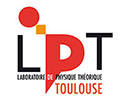Computational and robotic modeling reveal parsimonious combinations of interactions between individuals in schooling fish
Résumé
Coordinated motion and collective decision-making in fish schools result from complex interactions by which individuals integrate information about the behavior of their neighbors. However, little is known about how individuals integrate this information to take decisions and control their movements. Here, we combine experiments with computational and robotic approaches to investigate the impact of different strategies for a fish to interact with its neighbors on collective swimming in groups of rummy-nose tetra (Hemigrammus rhodostomus). By means of a data-based agent model describing the inter\-actions between pairs of H.~rhodostomus (Calovi et al., 2018), we show that the simple addition of the pairwise interactions with two neighbors quantitatively reproduces the collective behavior observed in groups of five fish. Increasing the number of interacting neighbors does not significantly improve the simulation results. Remarkably, we find that groups remain cohesive and polarized even when each agent only interacts with only one of its neighbors: the one that has the strongest contribution to the heading variation of the focal agent. However, group cohesion is lost when each agent only interacts with its nearest neighbor. We~then investigate by means of a swarm robotic platform the collective motion in groups of five robots. Our platform combines the implementation of the fish behavioral model
and an engineering-minded control system to deal with real-world physical constraints. We find that swarms of robots are able to reproduce the behavioral patterns observed in groups of five fish when each robot only interacts with its neighbor having the strongest effect on its heading variation, whereas increasing the number of interacting neighbors does not significantly improve the group coordination. Overall, our results suggest that fish have to acquire only a minimal amount of information about their environment to coordinate their movements when swimming
in groups.
Origine : Fichiers produits par l'(les) auteur(s)
Loading...
